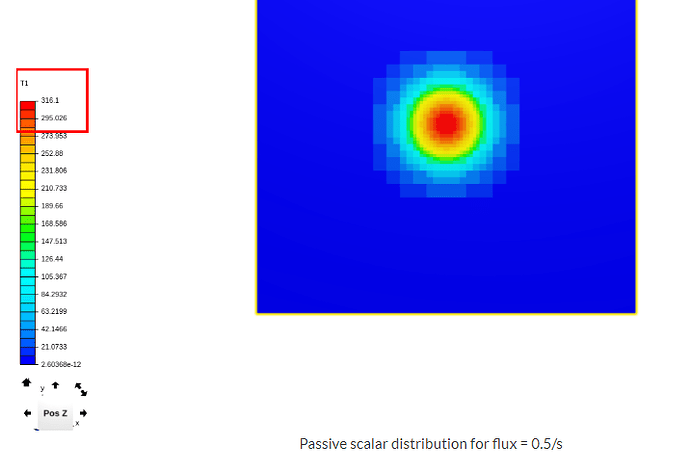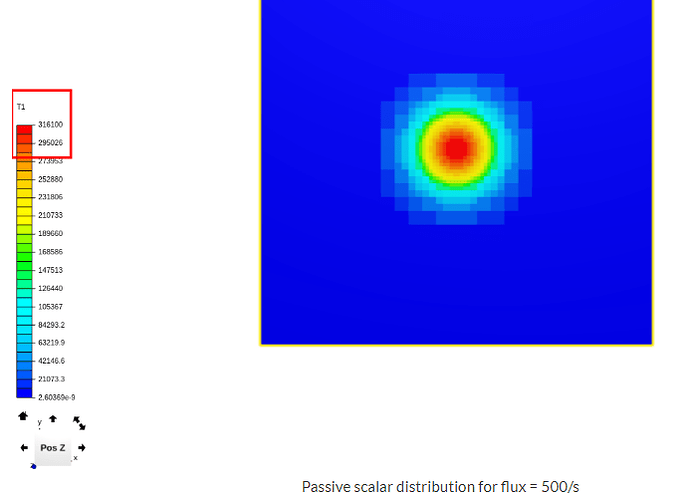Hi @Mo_Elsebaei
In passive scalar source, values interpretation is all upon the user. Thus one can define a passive scalar flux as 500 1/s and interpret it as a flux of 500 g/s or 0.5 kg/s as per one’s convenience.
Similarly in VPSS as 500 g/m3.s or 0.5 Kg/m3.s.
Below you can see comparison between cases for two different passive scalar source values, one defined as 500 1/s (interpreted in grams) while other as 0.5 1/s (interpreted in kilograms). We see that the final results (in this case is shown as T1) are only scaled by the equivalent factor (1000 here, see legends), whereas the actual dynamics remain unaltered.
Same is true for VPSS.
Hope you get the answer of your question.
Regards

